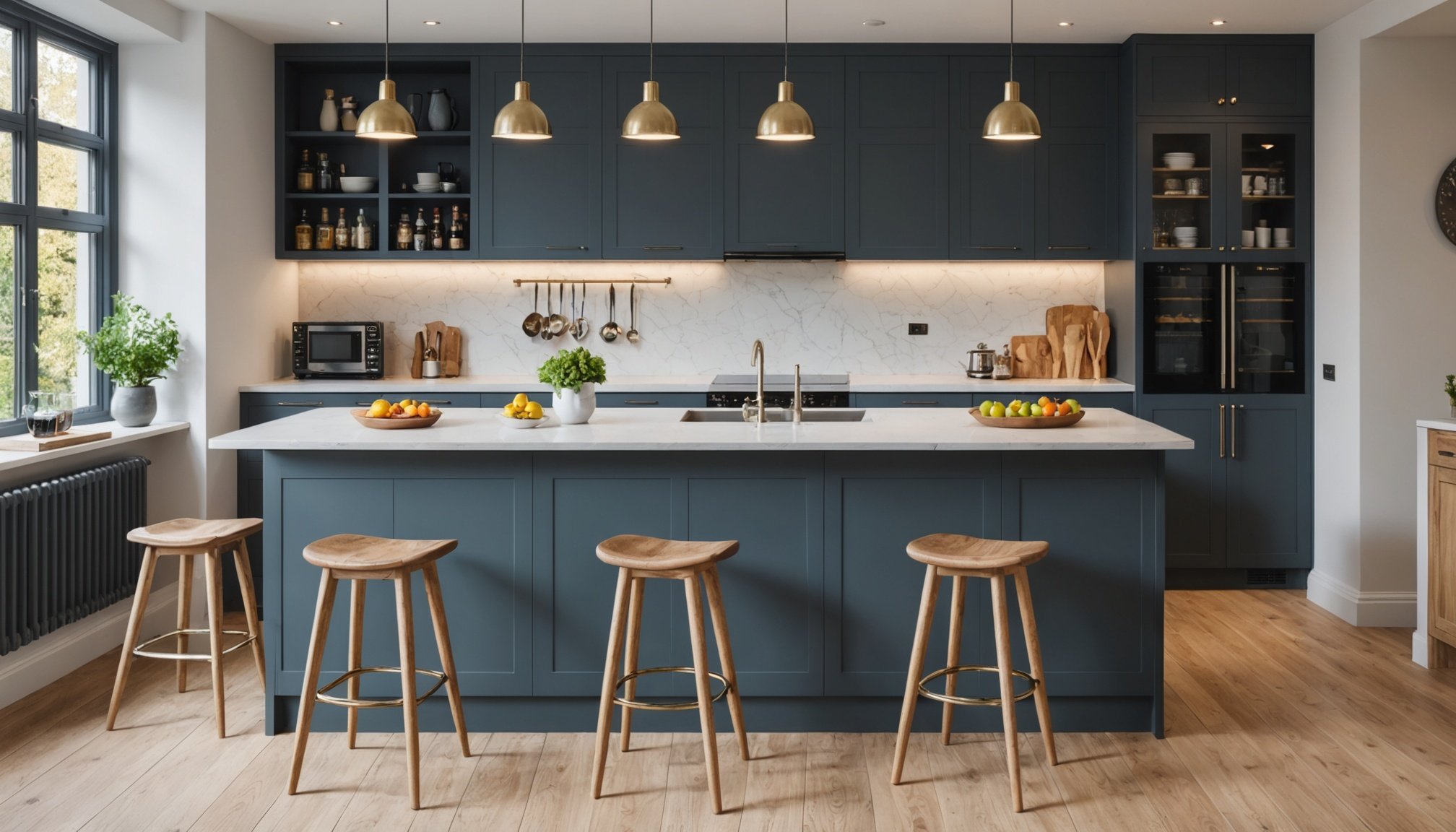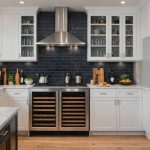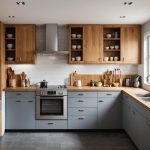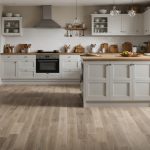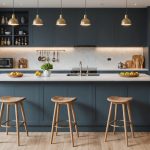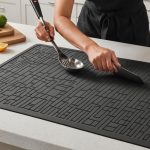Understanding the Importance of a Breakfast Bar
A breakfast bar can be a transformative addition to any home’s kitchen. Far beyond just a seating area, it bolsters kitchen space optimization by cleverly utilizing unused spaces, particularly corners or counter extensions that might otherwise remain dormant. This becomes exceptionally beneficial in smaller kitchens where maximizing every inch is crucial. By incorporating a breakfast bar, the kitchen not only becomes more functional but also rises in aesthetic appeal.
Moreover, a well-placed breakfast bar serves as a social cooking space, inviting family and friends to gather around while meals are prepared. This creates a seamless blend between cooking and socialising, turning the kitchen into a lively hub where conversations are as vibrant as the dishes being crafted. The benefits extend to fostering connections, with the breakfast bar encouraging informal gatherings that foster camaraderie.
Additional reading : Discover incredible uk savings: the definitive guide to top-tier commercial kitchen equipment
Ultimately, the breakfast bar benefits go beyond mere practicality. It elevates the kitchen’s role within the home from purely utilitarian to a central, dynamic space. This ensures an optimal blend of functionality, social interaction, and efficient use of space, which is paramount in modern living environments.
Planning Your Breakfast Bar Design
Creating a breakfast bar is a delightful way to enhance your kitchen space both functionally and aesthetically. Key elements such as spatial considerations and the kitchen layout must be factored into your planning.
Topic to read : The ultimate guide to selecting ideal kitchen flooring for your uk coastal home
Assessing Available Space
To start, carefully evaluate the available space in your kitchen. A crucial aspect of breakfast bar planning is determining how much room you have to work with and how it will integrate with the existing setup. Considerations include not only the space for seating but also ensuring there’s adequate room for people to move around it comfortably.
Determining Ideal Dimensions
Selecting the right dimensions for your breakfast bar can significantly impact its usability. A good rule of thumb is that each seat should have about 24-30 inches of space, which allows for easy seating and elbow room. This ensures that the bar is inviting and practical for everyday use or social gatherings.
Choosing the Right Location
Deciding on the perfect location involves understanding the kitchen layout. Ideally, your bar should complement the existing features and furniture. Consider traffic flow; positioning the bar away from congested areas will enhance accessibility and functionality. The goal is to make the breakfast bar a harmonious part of your kitchen while improving the overall design.
Design Elements for a Chic Breakfast Bar
Creating a chic breakfast bar involves careful consideration of design elements and style choices that align with your kitchen. Selecting the right breakfast bar design and color schemes is crucial for achieving a cohesive look.
Selecting a Design Style
When choosing a design style, it’s important to consider both functionality and aesthetics. Are you leaning towards a modern, minimalist look, or does a rustic charm appeal more to you? Each style brings a unique element to your breakfast bar design. Consider how these styles flow with the existing kitchen elements, ensuring a harmonious connection.
Incorporating Color and Materials
Your choice of color schemes plays a significant role in setting the tone for your breakfast bar. Opt for neutral tones for a timeless appeal or bold colors for a more dramatic statement. The materials you select, such as wood, marble, or stainless steel, also define the bar’s durability and style. These materials not only enhance the visual appeal but also contribute to the functionality.
Choosing Bar Stools and Seating Options
Bar stools are not just functional; they are a key part of your breakfast bar design. Consider options that blend with your chosen style and provide comfort. Pay attention to textures, colors, and materials that complement your overall design, ensuring that the seating doesn’t clash but enhances the space.
Materials for Your Breakfast Bar
Choosing the appropriate breakfast bar materials is crucial for ensuring both functionality and style in your kitchen. The selection primarily revolves around the countertop options you consider, each offering distinct benefits and drawbacks.
When assessing countertop options, three common choices are stone, wood, and laminate. Stone countertops, such as granite and marble, are lauded for their durability and elegant appearance. They can withstand high temperatures and resist scratches, making them suitable for a bustling kitchen environment. However, stone surfaces often require regular sealing and can be costly.
Wood countertops bring a warm, inviting look to a breakfast bar, exuding rustic charm. They are easy to maintain with regular oiling and are relatively affordable. However, wood is prone to scratches and water damage, necessitating mindful usage to preserve its condition.
Laminate countertops are a budget-friendly alternative known for their versatility in design and ease of maintenance. Boasting a wide range of colours and patterns, laminate allows for creative expression. Despite being less durable than stone or wood, it is resistant to staining and doesn’t require sealing.
Ultimately, consideration of durability and maintenance needs is essential when selecting your breakfast bar materials. Factor in your lifestyle and kitchen habits to make an informed decision.
DIY Installation Tips
Embarking on a DIY kitchen project like a breakfast bar installation can be a rewarding experience. Before diving in, gather the essential tools and materials. These include a sturdy drill, screws, a tape measure, a spirit level, and brackets for securing the bar. Materials such as a wooden countertop, support legs, and finishing touches like varnish or paint will also be necessary.
Essential Tools and Materials
Having the right tools is crucial for success. A well-equipped toolkit ensures your breakfast bar installation is smooth and efficient. Verify that everything is ready to avoid interruptions.
Step-by-Step Installation Process
Begin by measuring the area where the breakfast bar will be installed. Mark precise points on the wall and floor for the perfect alignment. Attach the brackets securely to support the countertop. Place the countertop, ensuring it is level. Finally, fix the support legs, checking stability.
Avoiding Common Pitfalls
Preparation is key. Clear the area of obstacles and debris before starting. Double-check measurements and always use a spirit level to ensure a flat surface. Ensuring stability and safety during assembly will prevent future mishaps or accidents. These renovation tips can guide you to a hassle-free and satisfying DIY adventure.
Adding Functionality and Accessories
Enhancing your breakfast bar with technology integration can elevate both its functionality and aesthetic appeal. Incorporate power outlets to make charging appliances or devices convenient. By embedding USB ports within the bar, you cater to modern tech needs seamlessly, making it a versatile workspace or social hub.
Strategically selected storage solutions can transform your breakfast bar into a powerhouse of practicality. Introduce under-counter cabinetry or shelving to keep the area neat and organised. These solutions maximize space, offering room for essentials like dishes or cookbooks without cluttering the surface.
To infuse personality, consider breakfast bar accessories that reflect your style. Choose decorative elements such as stylish stools, eye-catching lighting fixtures, or statement centrepieces to personalise the atmosphere. By balancing function with form, the breakfast bar becomes a customized focal point within your home.
Ultimately, such thoughtful additions foster a more efficient and inviting environment, encouraging family and friends to gather comfortably around your newly upgraded space.
Visual Inspiration and Case Studies
Exploring breakfast bar examples can offer a plethora of design inspiration for varied tastes and spaces. Whether you’re captivated by rustic charm or sleek modern aesthetics, there’s a style to suit every home. By examining different examples, homeowners can draw insights into layout functionality and style coherence.
Showcasing Various Styles
A colourful array of breakfast bar styles exists, from minimalist wooden setups to those featuring intricate marble surfaces. Beyond material and colour, think about how design inspiration can be drawn from the use of lighting, seating arrangements, and storage solutions integrated into the breakfast bar itself.
Analyzing Successful UK Kitchen Transformations
Real UK kitchen transformations offer key insights into what makes a successful renovation. Many have embraced open-plan concepts, with breakfast bars seamlessly connecting kitchen and living spaces. These examples often show how successful renovations balance practicality with elegance. By reviewing what others have done, you gain invaluable perspective to apply to your own space.
Gathering Ideas from Designers
Designers bring a wealth of design inspiration, often pushing creative boundaries with functionally innovative breakfast bars. Highlights from these designs include creative use of space, such as corner breakfast bars or pop-up seating. By analysing these successful breakfast bar projects, additional practical and aesthetic elements can be incorporated into any kitchen renovation.

